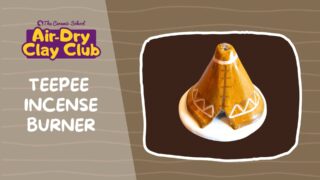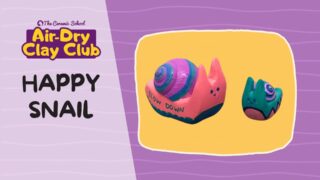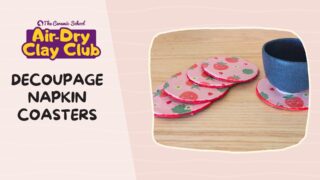Looking for a fun and easy Easter craft? This DIY Easter Bunny Vase is the perfect project to add a handmade touch to your holiday décor! Made with air-dry clay, this adorable bunny holds a tiny test tube for fresh flowers—making it a sweet spring decoration or a thoughtful gift. The best part? It’s simple to make and doesn’t require any special tools!
Let’s get started!
Materials You’ll Need:
- Air-dry clay
- Aluminum foil
- A rolling pin
- The free bunny template
- A knife or clay tool
- A small test tube
- Slip (optional)
- Fine sandpaper
- Acrylic paint
- Mod Podge (optional)
These are products I am using myself, however there are lots of other good options. When you buy through links on our site, we may earn an affiliate commission.
Step 1: Create the Bunny Shape with Foil
Start by scrunching up some aluminum foil into a rough bunny shape. This helps in two ways:
- It saves clay, so you don’t need to use as much.
- It makes the bunny lighter and helps it dry faster!
You don’t have to make it perfect—just a general bunny shape, since we’ll refine it with clay later.
Step 2: Roll Out & Cut the Bunny Shape
Take your air-dry clay and roll it out to about ¼ inch thickness. You can use a rolling pin, but pressing it with your hands works too!
Now, use my free bunny template (or draw your own) to cut out two identical bunny shapes. If you’re confident, you can also freestyle the bunny shape without a template!
Step 3: Cover the Foil with Clay
Place one bunny shape on each side of the foil form, pressing them gently onto the foil. Now, start blending the edges together so the bunny looks like one solid piece.
Use your fingers or a small clay tool to smooth out the seams and adjust the shape as needed. Take your time—this step really makes a difference in the final look!
Step 4: Add the Test Tube Holder
Before the clay dries, take your small test tube and gently press it into the bunny’s paws. This will create the perfect little space to hold the vase. Wiggle it slightly to ensure it won’t be too tight once dried, then remove it and set it aside.
Step 5: Smooth Everything Out with Slip
Now, let’s make the bunny extra smooth! Use slip (which is just watered-down clay) to blend any rough edges or cracks. If you’re new to slip, I have a video tutorial on how to make it!
Don’t stress about tiny cracks—air-dry clay naturally develops them as it dries, and we’ll fix them later with sanding.
Step 6: Let It Dry & Sand for a Smooth Finish
Now comes the hardest part—waiting! Let your bunny dry completely for at least 24-48 hours. Once it’s fully dry, use fine sandpaper to smooth out any rough spots or cracks.
This step makes a huge difference in giving your bunny a polished look!
Step 7: Painting Your Bunny
Time to bring your bunny to life!
I couldn’t decide between brown or grey, so I mixed them together and ended up loving the grey shade! Feel free to experiment with colors—white, pastel pink, or even speckled eggshell patterns would be adorable.
Once the paint dries, add a cute bunny face using a fine brush or paint marker.
Step 8: Sealing & Finishing Touches
To protect your bunny vase and give it a nice finish, apply a coat of Mod Podge or a sealant. This helps make the surface more durable and slightly water-resistant. Once it’s dry, place the test tube back into the bunny’s paws, fill it with a little water, and add fresh flowers!
Your Easter Bunny Vase is Ready!
And that’s it—you’ve just made a beautiful handmade bunny vase! This adorable DIY makes the perfect Easter table centerpiece or a sweet handmade gift for someone special.






Responses